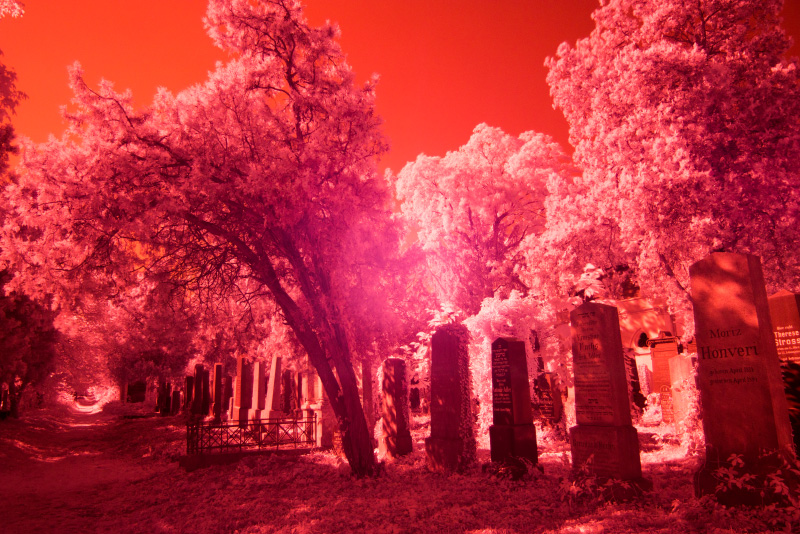Infrared photography with the D800
So far I have hardly dealt with infrared photography. A few years ago I made a few attempts with the D100, but the result was anything but satisfactory. That was actually the end of this topic for me. Nevertheless, I was interested to see how the D800 did, especially since the infrared filter is still in the drawer.
So yesterday I went to the Vienna Central Cemetery with my camera and tripod in fantastic weather. Although I had almost all lenses with me, I only used the Nikon 24-70/2.8. The infrared filter is a Hoya R72. What bothered me most during my first attempt with the D100 was the awkward handling. As you can't see anything through the filter, you first have to look for a subject without the filter, then screw the filter on and take the photo. If something doesn't fit, unscrew the filter again, realign the camera and screw the filter back on. That gets tedious over time. Nowadays, however, cameras have a live view, and with fast lenses and enough sunlight, you can also see something to some extent. The disadvantage is that the battery is drained incredibly quickly. And as I said, the subject has to be relatively sunny for you to be able to see anything and, above all, for the camera to be able to focus.
Here is an example of how the photo comes out of the camera without any special white balance. The exposure time is 2 seconds, aperture 3.5 at ISO 800.

I change the white balance in Capture NX. To do this, select "Set grey point" for white balance and "Range for grey value" for the reference value. Then select any area in the image. This produces an image that looks like this:

Now the red and blue channels are swapped in Photoshop:

This is just the actual infrared image. With a little Photoshop it looks like this:

On the whole, I am actually satisfied with the result. Of course, you can't compare it with a camera specially converted for infrared photography, but if you don't mind the long exposure time, you can achieve nice results with it.
Here is another example that I really like:

I have noticed another problem, the cause of which is not yet entirely clear to me. In some photos there is a bright "hotspot" in the middle. Here is an example:

Apparently, the more closed the aperture, the more pronounced this effect becomes. This photo was taken with aperture 9. But I don't know if this is a general problem or depends on the lens...